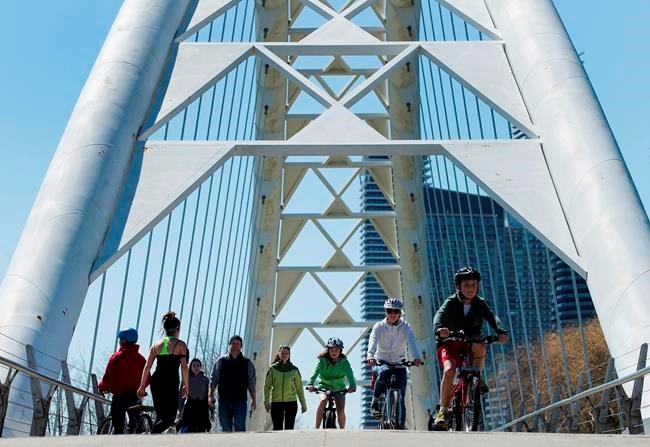TORONTO — Like many Canadians, Lindsay Bliek and her children have spent a lot of time cycling recreationally under lockdown. In fact, the Calgary-based cycling blogger recently started plotting new routes to avoid crowds on her usual ones.
Thanks in part to the surge in popularity of cycling, Bliek says getting her hands on a bike is more complicated than in the past. When her eldest daughter was ready for a larger set of wheels this summer, they found their options reduced to a fraction of what they would typically find in stores.
"The decision ultimately came down to what was available for us," Bliek says. She was shocked by how low the stock was, though she's happy with the bike her daughter eventually found.
Bliek is far from alone. With public transit options curtailed and families staying closer to home, demand for bikes has surged across the world, leaving many first-time buyers with fewer options.
"Talking to friends who work at bike stores and own bike stores in Calgary alone, the majority of entry-level bikes are sold out," Bliek says.
The same is happening in other parts of the country, including Vancouver, where "for every one person that is looking for a deal, there are two more waiting behind them to buy a bike," says Navdeep Chhina, acting executive director of HUB Cycling, a non-profit designed to promote bicycle use in the city.
And in Toronto, bike repair shops like the University of Toronto's Bike Chain are receiving more requests than they have capacity to handle. "From my personal experience, Bike Chain will post a bike [for sale online] and within two hours, someone will have claimed it," says executive director Beth Austerberry. Other shops with walk-in business models are seeing hour-long lines down the sidewalk, she notes.
But with options so limited, finding a bike within a reasonable price range can be difficult. "Getting a new bike under $1,000 is difficult right now," Austerberry says.
Shopping secondhand, on sites like Facebook Marketplace, Craigslist, and Kijiji, is a suitable alternative, where reasonable bikes for first-time riders run around $500, Chhina says.
But buying used bikes can come with complications if you're not careful. Chhina, Austerberry and Bliek all suggest taking extra precautions to ensure that a secondhand bike is safe to ride and, ideally, not stolen. Bliek suggests searching for a bike's serial number — the six to ten-digit number located on the frame where the two pedals meet — on sites like 529 Garage and Bike Index, which store lists of reported bike thefts.
She says prospective buyers should also use their "spidey senses" and dig for context clues when searching through online ads. "Does the price make sense, or is it too good to be true? Are the photos good quality and is the ad descriptive and not overly simple?" Bliek says. "Then, check the seller history for the ad: Is all they're doing selling bikes or is it just a person who is selling household goods and a mix of stuff?"
Chhina suggests meeting the secondhand seller in a public place, ideally near a repair shop, where you can seek a second opinion. "Talk to the bike mechanic in advance and say 'I'm looking to buy a bike, are you able to take a quick peek and let me know if there's anything wrong with it, or if I should be concerned?'" he says.
If you buy a bike in need of slight repairs, a quick servicing will likely run between $30 and $60, depending on the extent of repair needed. Other expenses worth budgeting for include a helmet, a sizable lock and a pair of fenders, all three of which can be purchased from bike shops for about $100 in total, Chhina estimates.
The additional costs can add up, but the expenses are a crucial part of the equation, the experts say. From a financial perspective, the upfront investment usually saves money on fix-ups in the long term, and a bike that's comfortable and safe to ride reduces your risk of accident. Especially when availability is limited, it's worth taking additional time to make an informed decision and purchase all the necessary gear.
"If an inexpensive bike doesn't fit you well, it is going to be a worse investment than something that costs a little bit more but you actually feel comfortable riding," Austerberry says.
"Lots of bikes sit in sheds because they aren't the right choice."
Audrey Carleton, The Canadian Press


